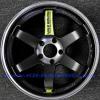what does the "V" stand for in V6?
Announcements
-
Similar Content
-
Latest Posts
-
Not that I know from experience, but in theory you'd want your gate spring to be as close to target pressure as possible, so you'd go with the higher gate spring?
-
Before I commit to it as I already have the wastegate off the car, would you change it to the 9psi spring instead of the 12, or whack it back on now and try your suggestion? Edit: Actually I might just swap the spring and see what the logs say after another few pulls, as we know it's still spiking without the Mac valve in the picture so I need more data without the Mac valve trying to combat the issue.
-
By Murray_Calavera · Posted
Sounds good Hmm suppose the main thing is, how much do you care about this car? The filler doesn't make for a very good water barrier lol. If there was a tiny little bit of rust forming now, that in 3 to 5 years time becomes obvious under the paint (starts to bubble up), would it bother you? -
I already have the ability to datalog the voltage... what I can't do is correlate it to what the gauge is showing when I'm looking at the data at a later date. Or something like this. Except getting the oil to 125C+ involves me going 200+kmh at the track so you can imagine this is a little tricky unless I do something like note what the voltage is when I am at the top of 5th gear so I have a point to reference on. Drove car today. O2 still reading richer because hopefully not a leak instead of massive restriction I've introduced. Car really doesn't sound like a LS. It's quite strange. Pulled a bit of fuel out up top. This does potentially explain why my spark plugs looked like the car was running pretty over-rich. If I was tuning it to a ~12.7 which in reality was far richer than that in the past. It will be handy to have the dyno WB to compare my WB to to compare notes that's for sure. At this point I'm happy to just sit in the passenger seat and tune the thing given I've got about 7 million hours on the platform lol.
-
By Chocolate Cheesecake. · Posted
Yeah I understand you have to pay for an updated map or subscription service or something. But I can't even find a current map for Australia. My map is dated 2017, but didn't this car version still sell in Australia until 2021? Also, just as an aside, the navigation system warns you of traffic incidences ahead.....why would they include that on a map they knew is not receiving live information. I am forever going to be warned of an incident that probably existed for 30 minutes 8 years ago.
-







Recommended Posts
Create an account or sign in to comment
You need to be a member in order to leave a comment
Create an account
Sign up for a new account in our community. It's easy!
Register a new accountSign in
Already have an account? Sign in here.
Sign In Now